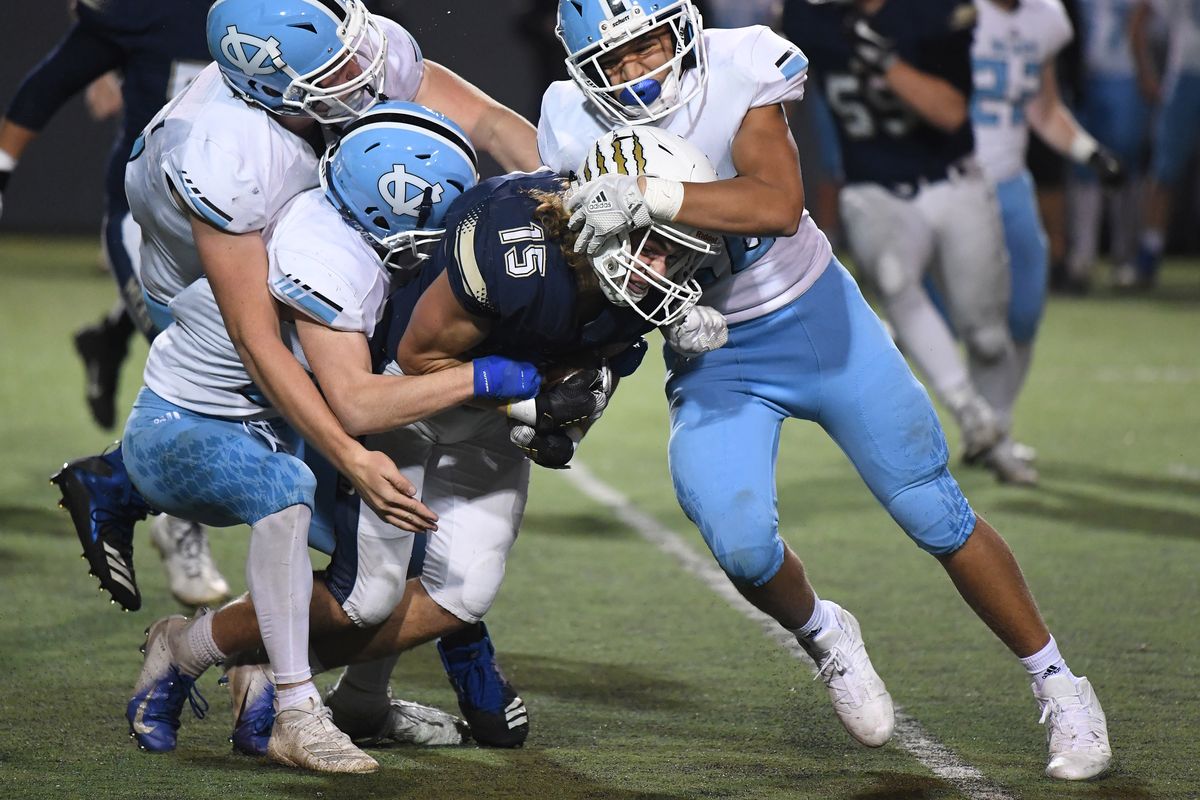WIAA’s revisions open door for competition provided COVID-19 thresholds are met

The Washington Interscholastic Activities Association announced revisions on Wednesday to its schedule for the return of high school sports. While the development seems encouraging, there is still a lot of work to be done before competition may begin.
The revisions would put fall sports, mainly contested outdoors, up first on the schedule and allow preseason practice to begin Feb. 1. That’s the headline.
Before that can happen, regions (not county-by-county as the previous plan) must meet Gov. Jay Inslee’s threshold to move into Phase 2 of his updated Healthy Washington-Roadmap to Recovery plan.
Greater Spokane League director Ken VanSickle is cautiously optimistic, but is preaching patience.
“I really think it’s important for parents and athletes to know that this is what we’re hoping to do,” he said. “This is what the WIAA has planned out. However, we still need to meet the ‘Healthy Washington’ guidelines that have recently been put out to be able to participate.”
To advance to Phase 2, regions must have:
- A 10% decreasing trend in case rates;
- A 10% decrease in COVID hospital admission rates;
- An ICU occupancy rate less than 90%;
- A test positivity rate of less than 10%.
A region must meet all four criteria before moving to Phase 2. The state regions were set up so that a league like the GSL, with schools in several counties, can accommodate all their members.
Once in Phase 2, low, moderate and outdoors high-risk sports competitions will be allowed with up to 200 spectators.
The state’s revisions, however, don’t mention the resumption of “high-risk” indoor sports such as basketball and wrestling, which is why the WIAA moved fall sports from “Season 2” of its original plan back to “Season 1.” The association will consider those sports at a meeting later this month after receiving more guidance from the state.
VanSickle said he thinks it was important for the WIAA to issue these revised guidelines – even if there are still many questions to answer.
“It shows a commitment from the WIAA to make adjustments and move activities and move sports around so that we are making every effort to get three sports seasons in before the end of school.
“I think it shows our athletes, shows our parents that everybody’s working for the same thing – to give our kids those opportunities.”
One of those adjustments is allowing leagues and regions “the opportunity to change the sports and move seasons around to better fit their area,” VanSickle said.
“As we all know, weather is different on the West Side than on the East Side. It’s different in Spokane than it is in the Tri-Cities,” he added.
If the GSL can’t line up cross country routes or get fields ready to play slowpitch or soccer in February, it has an option to move those sports to a more weather-friendly season .
Earlier this week, Spokane Public Schools provided a plan to get students back into the classroom. VanSickle and the area’s athletic directors are doing everything they can to also allow sports and activities to resume.
“The superintendents in our area are working with Spokane Regional Health. Our principals, our athletic directors, and everybody is working hard to, first of all, get our kids back in school in a safe manner. And to then allow our student-athletes to participate in sports.
“We all know the importance of having kids involved in activities.”
Still, none of it will matter if the COVID rates don’t make dramatic improvements over the next few weeks. The state’s revisions are still ambiguous about the return of indoor contact sports.
“We don’t have all those answers,” VanSickle said. “The WIAA is working with Gov. Inslee’s office, they’re working with the state Board of Health try to get those answers that the athletic directors have on what we can do.
“You can look at (the guidelines) and go ‘In Phase 2, we can play all the sports.’ I don’t believe that’s the case,” VanSickle said. “Obviously, we have high-risk sports, moderate, and low-risk sports, and we need to know exactly when we can play those sports.”
VanSickle said everyone involved in the state – from the governor’s office to the administrators to the athletic directors and coaches – is working toward that common goal though.
“Everybody’s trying to make it happen,” he said. “I think parents and athletes need to know that – that everybody’s working hard, because we know the importance not only of education but educational-based athletics, and what athletics can do for our students and the involvement in our schools.”